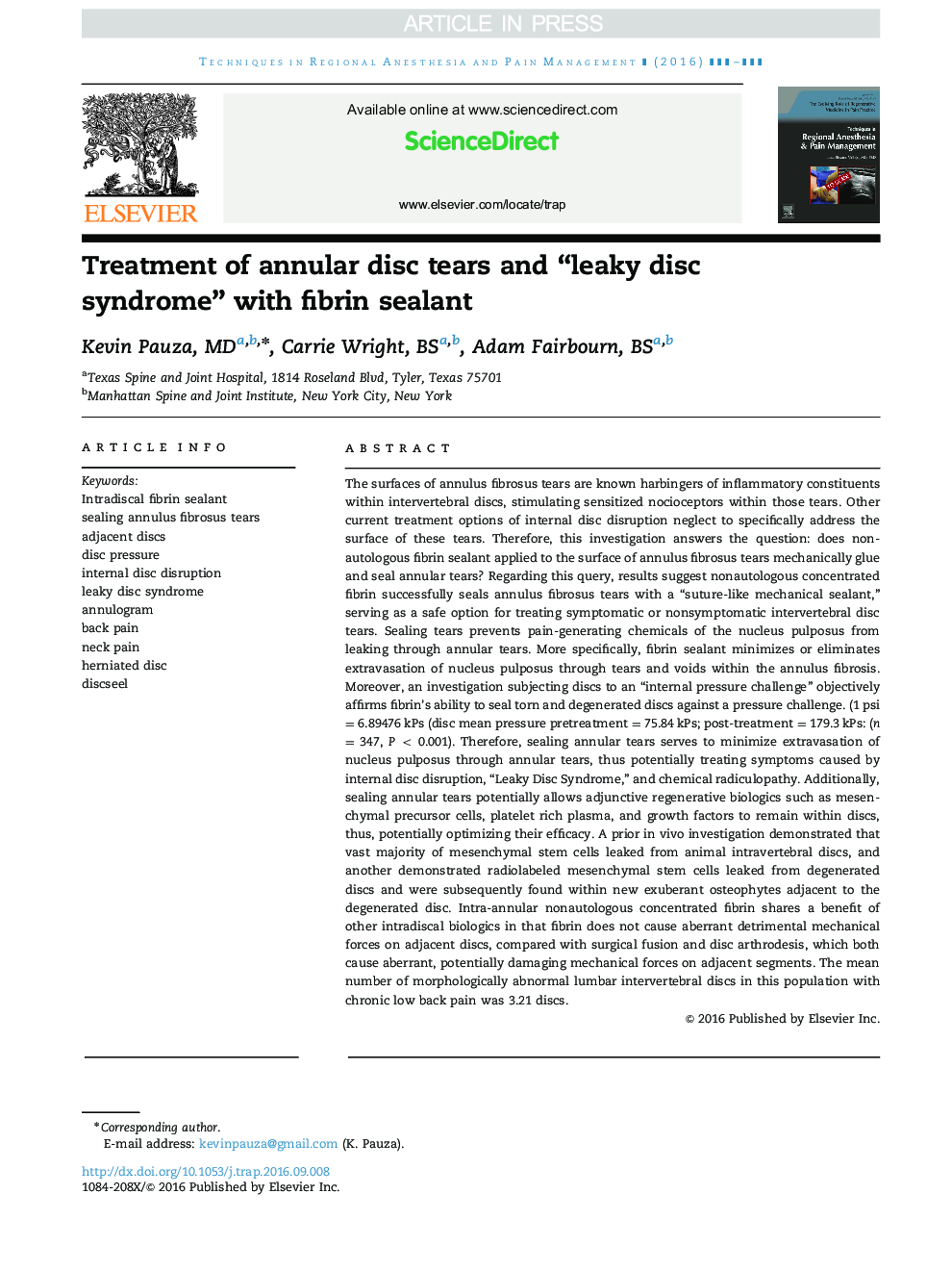| Article ID | Journal | Published Year | Pages | File Type |
|---|---|---|---|---|
| 5584098 | Techniques in Regional Anesthesia and Pain Management | 2015 | 5 Pages |
Abstract
The surfaces of annulus fibrosus tears are known harbingers of inflammatory constituents within intervertebral discs, stimulating sensitized nocioceptors within those tears. Other current treatment options of internal disc disruption neglect to specifically address the surface of these tears. Therefore, this investigation answers the question: does nonautologous fibrin sealant applied to the surface of annulus fibrosus tears mechanically glue and seal annular tears? Regarding this query, results suggest nonautologous concentrated fibrin successfully seals annulus fibrosus tears with a “suture-like mechanical sealant,” serving as a safe option for treating symptomatic or nonsymptomatic intervertebral disc tears. Sealing tears prevents pain-generating chemicals of the nucleus pulposus from leaking through annular tears. More specifically, fibrin sealant minimizes or eliminates extravasation of nucleus pulposus through tears and voids within the annulus fibrosus. Moreover, an investigation subjecting discs to an “internal pressure challenge” objectively affirms fibrin׳s ability to seal torn and degenerated discs against a pressure challenge. (1 psi = 6.89476 kPs (disc mean pressure pretreatment = 75.84 kPs; post-treatment = 179.3 kPs: (n = 347, P < 0.001). Therefore, sealing annular tears serves to minimize extravasation of nucleus pulposus through annular tears, thus potentially treating symptoms caused by internal disc disruption, “Leaky Disc Syndrome,” and chemical radiculopathy. Additionally, sealing annular tears potentially allows adjunctive regenerative biologics such as mesenchymal precursor cells, platelet rich plasma, and growth factors to remain within discs, thus, potentially optimizing their efficacy. A prior in vivo investigation demonstrated the vast majority of mesenchymal stem cells leaked from animal intravertebral discs, and another demonstrated radiolabeled mesenchymal stem cells leaked from degenerated discs and were subsequently found within new exuberant osteophytes adjacent to the degenerated disc. Intra-annular nonautologous concentrated fibrin shares a benefit of other intradiscal biologics in that fibrin does not cause aberrant detrimental mechanical forces on adjacent discs, compared with surgical fusion and disc arthrodesis, which both cause aberrant, potentially damaging mechanical forces on adjacent segments. The mean number of morphologically abnormal lumbar intervertebral discs in this population with chronic low back pain was 3.21 discs.
Related Topics
Health Sciences
Medicine and Dentistry
Anesthesiology and Pain Medicine
Authors
Kevin MD, Carrie BS, Adam BS,
